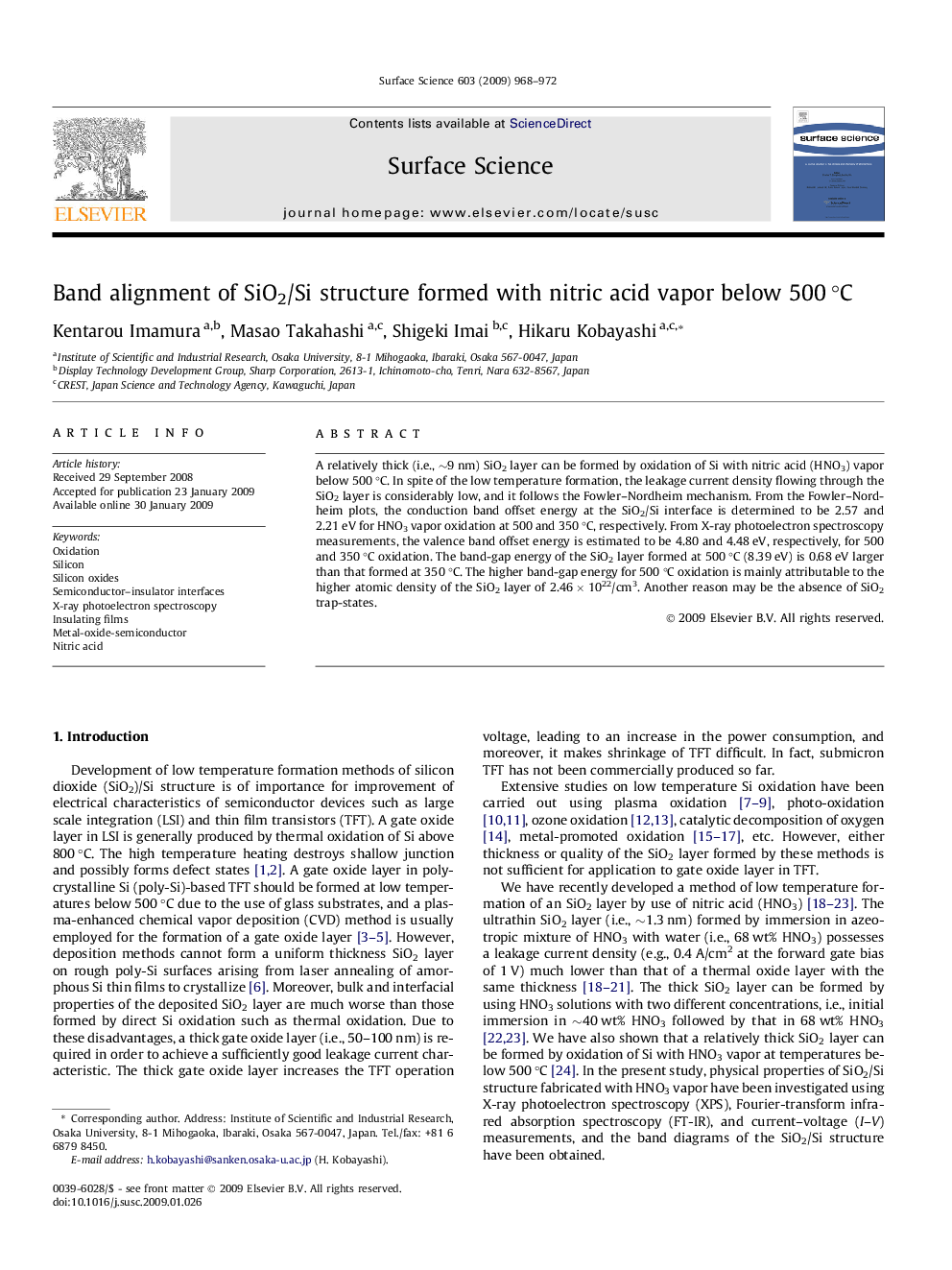| Article ID | Journal | Published Year | Pages | File Type |
|---|---|---|---|---|
| 5423919 | Surface Science | 2009 | 5 Pages |
Abstract
A relatively thick (i.e., â¼9 nm) SiO2 layer can be formed by oxidation of Si with nitric acid (HNO3) vapor below 500 °C. In spite of the low temperature formation, the leakage current density flowing through the SiO2 layer is considerably low, and it follows the Fowler-Nordheim mechanism. From the Fowler-Nordheim plots, the conduction band offset energy at the SiO2/Si interface is determined to be 2.57 and 2.21 eV for HNO3 vapor oxidation at 500 and 350 °C, respectively. From X-ray photoelectron spectroscopy measurements, the valence band offset energy is estimated to be 4.80 and 4.48 eV, respectively, for 500 and 350 °C oxidation. The band-gap energy of the SiO2 layer formed at 500 °C (8.39 eV) is 0.68 eV larger than that formed at 350 °C. The higher band-gap energy for 500 °C oxidation is mainly attributable to the higher atomic density of the SiO2 layer of 2.46 Ã 1022/cm3. Another reason may be the absence of SiO2 trap-states.
Keywords
Related Topics
Physical Sciences and Engineering
Chemistry
Physical and Theoretical Chemistry
Authors
Kentarou Imamura, Masao Takahashi, Shigeki Imai, Hikaru Kobayashi,
